
Strausberger Platz, 2015, Print mounted on board, 42 x 59 cm
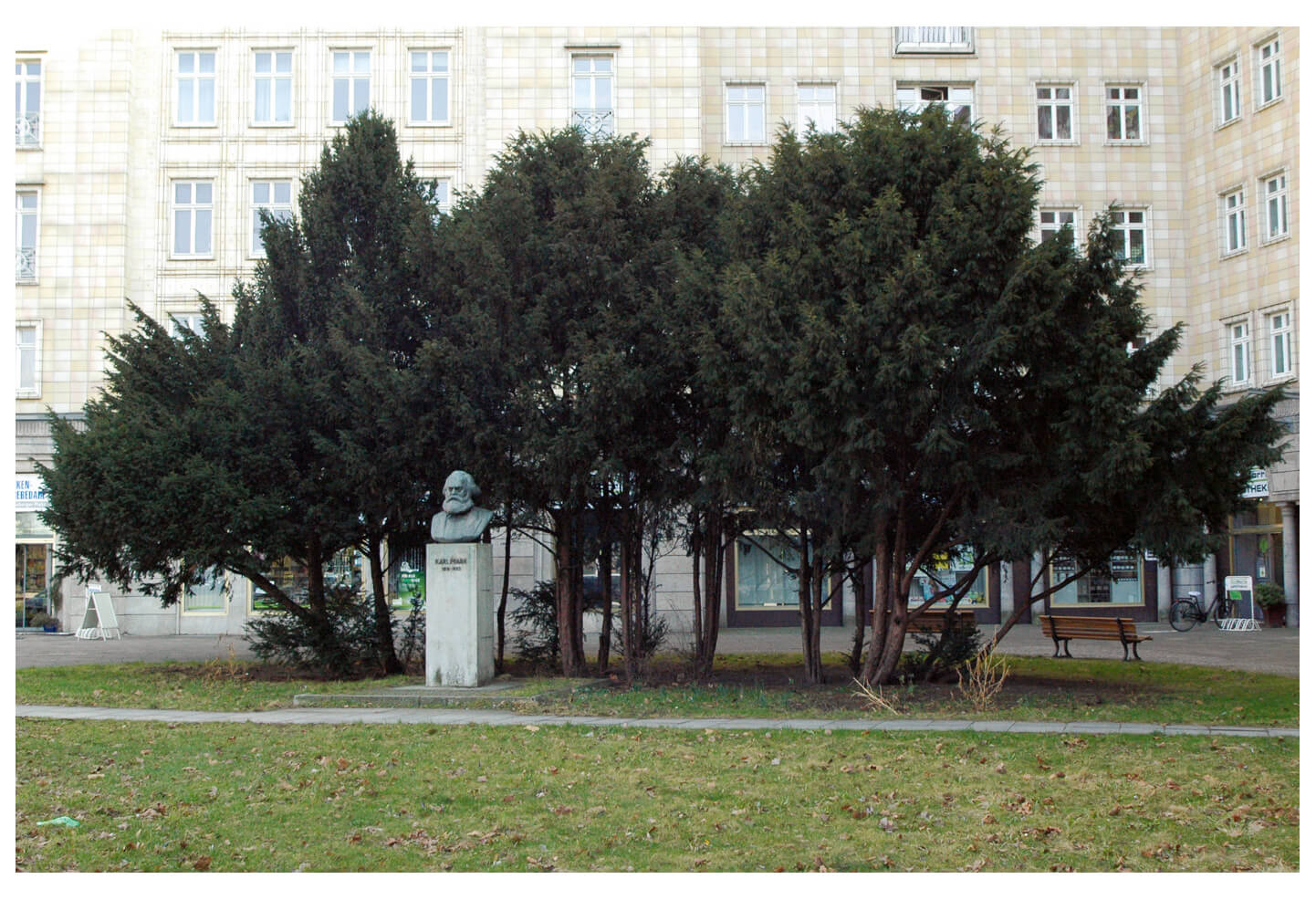
Strausberger Platz, 2015, Print mounted on board, 42 x 59 cm
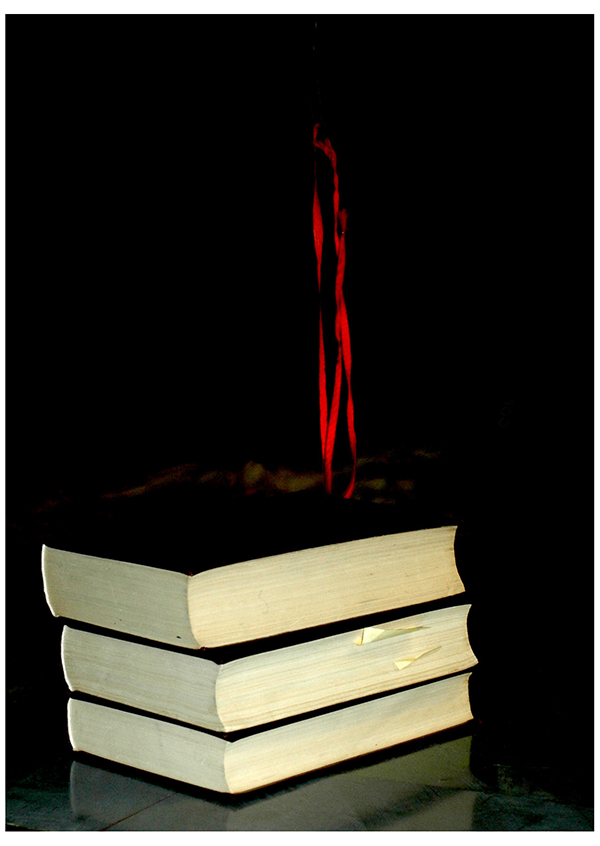
Das Kapital lesen, 2015, Mixed media, 15 x 21 x 40 cm

Das Kapital halten, 2019, Acrylic on linen, 134 x 205 cm
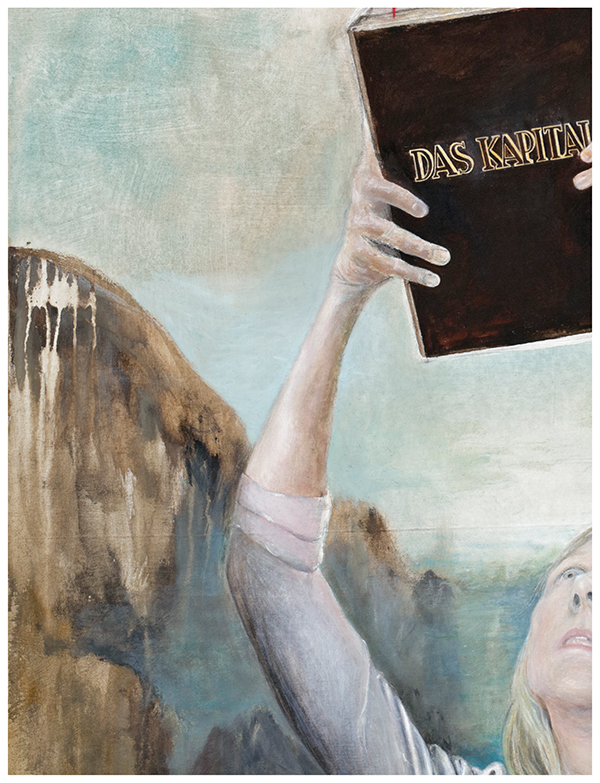
Das Kapital halten, Detail

Das Kapital halten, Detail
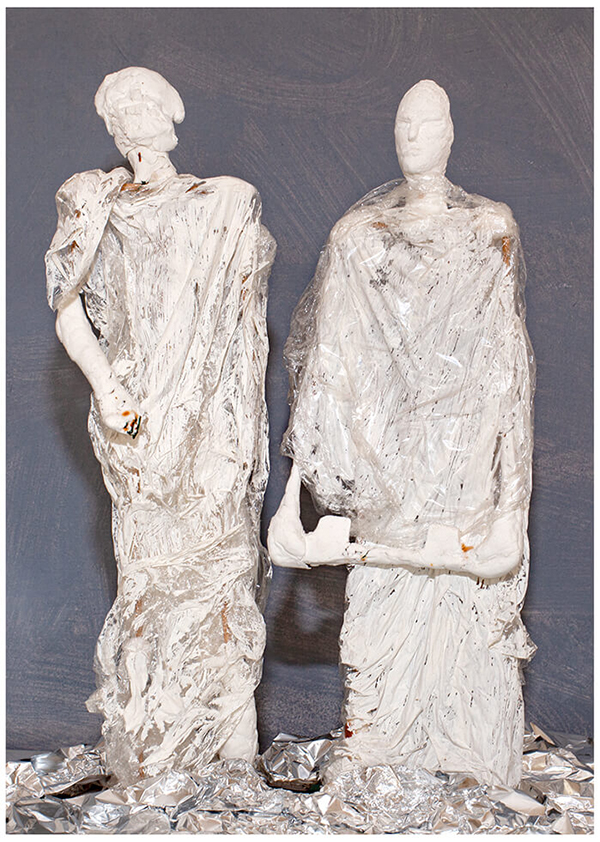
Berliner Schlüssel, 2015, Mixed media, 25 x 12 x 27 cm
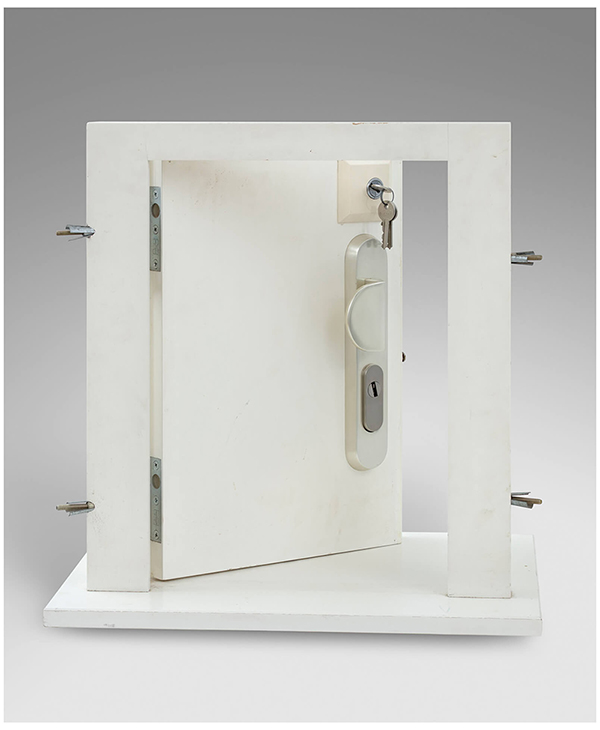
Untitled, 2005, Mixed Media, 50 x 40 x 50 cm
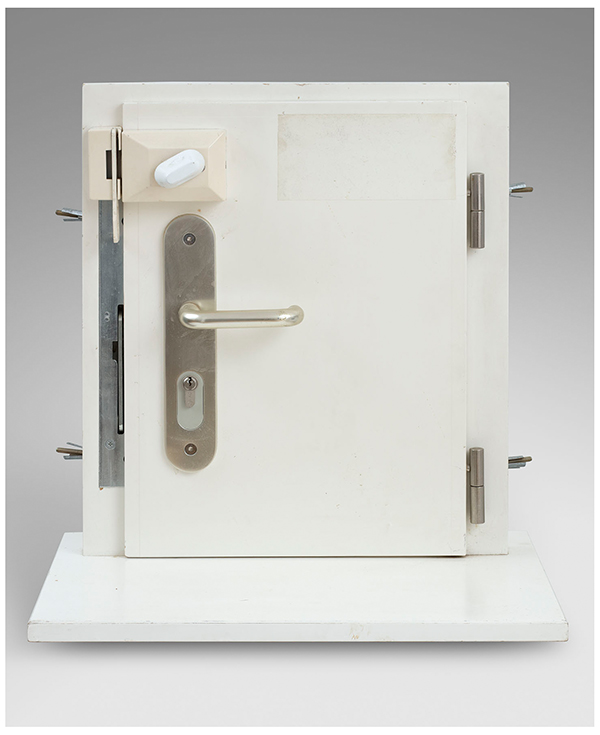
Untitled, Mixed Media, 2005, 50 x 40 x 50 cm
DAS KAPITAL
It then came to pass that a man named Beuys stated whimsical things like: “Every person is an artist”. This led to misunderstandings in such way that many people began devoting themselves to painting. And when they beheld that it was not as easy to paint a picture as they thought Joseph had insinuated, they invented painting programmes which would not make it easier but at least more clearly structured. Joseph himself was a so-called grand master who worked on perceptions with simple resources - just as the miller transforms raw grain into fine substances like superfine cake flour Type 450. He was blessed with a sense of mission, turning the most basic materials into art and distributing his works to many museums and collections. For the museum in Schaffhausen, he installed a piece entitled “Das Kapital Raum 1970 - 1977”. He and many others had read the original version by Karl Marx which was published in three volumes. In Beuys’ version, it was written on slate boards with large fonts. The engraved tablets existed only once, the book millions of times, and it is no exaggeration to say that there exist - in addition to the Bible - only few publications that are so well-known. Even if a part of the world interpreted “Das Kapital” religiously and the applications in the real world failed, it never stopped evolving. Schaffhausen could consider itself lucky to call an interpretation of “Das Kapital” its own. In a country such as Switzerland that is so aware of money, “Das Kapital” was optimally cared for, or so we might think. What was simply overlooked, however, was that other cities and towns had also built up large museums and sought ways to enrich them with works by important artists. One day a namesake of Karl Marx, Erich Marx, fell in love with Beuys’ “Das Kapital Raum 1970-1977” and bought it, not willing to read the three volumes of “Das Kapital”, because that would cost him dear for various reasons. Besides, he was already an old man. He gave the work as a permanent loan to the Hamburger Bahnhof in Berlin, whose director Kittelmann is said to have gathered useful experiences on eBay, and whose curators are all proven experts in their respective fields, especially on Beuys, as one can see. Schaffhausen brought legal action against the sale but the High Court of Schaffhausen confirmed that Crexart AG was the owner of Beuys’ work. One must remember that for more than 30 years, Schaffhausen had spent a fortune on installing, maintaining and presenting the work. “Das Kapital Raum 1970-1977” was removed and the museum was closed. For the last time, Nicolas Schafhausen turned the “Berlin key”, which is removable only in the locked position. In Berlin, the key passed into oblivion.
It then came to pass that a man named Beuys stated whimsical things like: “Every person is an artist”. This led to misunderstandings in such way that many people began devoting themselves to painting. And when they beheld that it was not as easy to paint a picture as they thought Joseph had insinuated, they invented painting programmes which would not make it easier but at least more clearly structured. Joseph himself was a so-called grand master who worked on perceptions with simple resources - just as the miller transforms raw grain into fine substances like superfine cake flour Type 450. He was blessed with a sense of mission, turning the most basic materials into art and distributing his works to many museums and collections. For the museum in Schaffhausen, he installed a piece entitled “Das Kapital Raum 1970 - 1977”. He and many others had read the original version by Karl Marx which was published in three volumes. In Beuys’ version, it was written on slate boards with large fonts. The engraved tablets existed only once, the book millions of times, and it is no exaggeration to say that there exist - in addition to the Bible - only few publications that are so well-known. Even if a part of the world interpreted “Das Kapital” religiously and the applications in the real world failed, it never stopped evolving. Schaffhausen could consider itself lucky to call an interpretation of “Das Kapital” its own. In a country such as Switzerland that is so aware of money, “Das Kapital” was optimally cared for, or so we might think. What was simply overlooked, however, was that other cities and towns had also built up large museums and sought ways to enrich them with works by important artists. One day a namesake of Karl Marx, Erich Marx, fell in love with Beuys’ “Das Kapital Raum 1970-1977” and bought it, not willing to read the three volumes of “Das Kapital”, because that would cost him dear for various reasons. Besides, he was already an old man. He gave the work as a permanent loan to the Hamburger Bahnhof in Berlin, whose director Kittelmann is said to have gathered useful experiences on eBay, and whose curators are all proven experts in their respective fields, especially on Beuys, as one can see. Schaffhausen brought legal action against the sale but the High Court of Schaffhausen confirmed that Crexart AG was the owner of Beuys’ work. One must remember that for more than 30 years, Schaffhausen had spent a fortune on installing, maintaining and presenting the work. “Das Kapital Raum 1970-1977” was removed and the museum was closed. For the last time, Nicolas Schafhausen turned the “Berlin key”, which is removable only in the locked position. In Berlin, the key passed into oblivion.